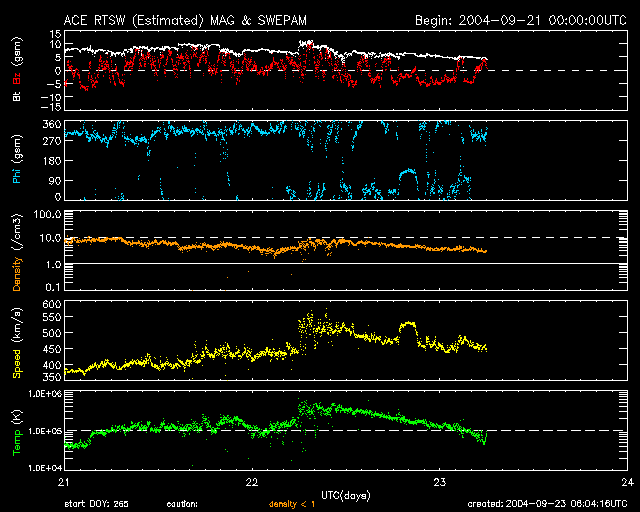Earth catches a graze as the CME which left the Sun on September 19, narrowly blew over our magnetosphere.
The M1.9 flare peaking at 17:12UT on September 19 was accompanied with a CME which was directed towards the west. At first instance, any conclusions about the strength of the plasma cloud and possible consequences for us, here on Earth. The coronograph LASCO onboard of SOHO, could not provide us any information because of the gap in the data at the time of the eruption. Another satellite, GOES measured an increased flux of high energetic particles. The flux of >10 MeV particles crossed the threshold around 20.30UT. The increase of particles bombarding space, points in the direction of an energetic event which is certainly troubling when directed straight to Earth.

September 22 around 6:00UT, ACE located in the L1 point next to SOHO, spotted a small shock in the solar wind speed, temperature, density and imbedded interplanetary magnetic field. The Earth is magnetically connected with the Sun by the open magnetic field lines merging from the solar surface. The western field lines bend towards Earth. This is caused by the 27-days solar rotation and the inertia of the lines: the Sun winds the lines into a spiral (Parker spiral). So, the CME left the Sun in the western direction and was guided along the interplanetary magnetic field lines. This bending of field lines makes the difference between eastern and western directed CMEs. Part of this passing CME was able to disturb our geomagnetic field causing a minor storm as measured by Izmiran (K=5) and Boulder (Kp=5). This last station gathers measurements of many stations scattered over the world and estimates a planetary K index. This Kpp is an index for the global disturbance of the earth magnetic field.

The black figure above is a plot of data from the Advanced Composition Explorer, short called ACE. The information we get from ACE is crucial for us, forecasters to identify possible turbulence caused by the solar wind. ACE offers us also a nice tool to look for CMEs heading for Earth. Once the solar wind passed ACE, it immediately clashes on the magnetosphere of Earth as the L1 point is located just before the bow shock (represents the outermost boundary of the geospace which is influenced by Earth's magnetic field. The solar wind blows over and aside this shock creating the typical bulb-cone form of it).





